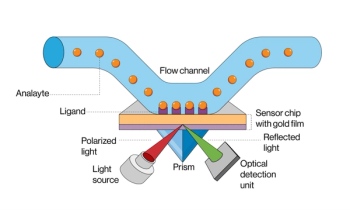
Smart Optical Sensors for Thermal Management in Electric Vehicles
A recent review in Energies explores the latest advancements in sensor applications for electric vehicle (EV) thermal management systems. The study, authored by Anyu Cheng, Yi Xin, Hang Wu, Lixin Yang, and Banghuai Deng from Chongqing University of Posts and Telecommunications, along with industry partners, examines how advanced optical sensors improve the efficiency, safety, and longevity of EVs.
As the demand for electric vehicles (EVs) continues to rise, ensuring their efficiency and safety has become a top priority. One of the critical challenges in EV technology is thermal management—controlling the temperature of key components such as batteries, motors, and air conditioning systems. A recent review published in Energies highlights the role of advanced optical sensors in optimizing these systems, offering insights into current technologies and future developments (1).
The study categorizes optical (and other types) sensors into three main applications: battery module sensors, motor module sensors, and air conditioning sensors. The paper identifies limitations in existing sensor technologies and suggests potential improvements for better thermal management in EVs (1). Battery health monitoring using various sensor types is an important application of optical technology sensors (2).
Enhancing Battery Safety with Advanced Sensors
Lithium-ion batteries, the primary power source for EVs, are highly sensitive to temperature fluctuations. Excessive heat can lead to thermal runaway, resulting in reduced battery efficiency and, in extreme cases, catastrophic failures leading to fires or other malfunctions. To address this, researchers have developed various sensing technologies for both internal and external battery monitoring (1,2).
Internal Battery Sensors:
Fiber Bragg Grating (FBG) Sensors: Initially studied by Yang and colleagues FBG sensors measure temperature variations within the battery, offering real-time monitoring and linear response in the 0–60°C range (1).
External Battery Sensors:
Digital Image Correlation Sensors: This optical-based technology enables real-time temperature monitoring without affecting battery performance (1).
Laser Beam Position Sensors and Multi-Beam Stress Sensors: These sensors detect mechanical stress and curvature changes in battery packs, providing insights into structural integrity and performance variations (1).
Motor Thermal Management
The motor, a core component of EVs, generates significant heat during operation. Traditional and emerging sensor technologies aim to enhance motor efficiency and reliability(1).
Traditional Motor Sensors:
Non-Contact Infrared Sensors: These measure infrared radiation emitted by the rotor, enabling high-precision temperature mapping with sensitivity as high as 0.05 °C.
Positionless Motor Sensors:
To overcome the limitations of traditional sensors, researchers are developing temperature estimation techniques that eliminate the need for direct temperature measurement (1).
Thermal Model-Based Estimation:By analyzing heat transfer mechanisms, and infrared—this method provides detailed motor temperature maps.
Optimizing EV Air Conditioning with Smart Sensors
EV air conditioning systems impact both passenger comfort and overall vehicle efficiency. Sensor technology plays a crucial role in regulating temperature and humidity (1).
Humidity Sensors: These sensors use light-based techniques such as infrared (IR) absorption or fiber-optic sensing to detect changes in humidity. These devices adjust air conditioning settings in real time, improving efficiency and passenger comfort while reducing energy consumption.
Future Directions
While current sensors provide significant benefits, challenges such as detection accuracy, data stability, and real-time processing persist. The review suggests future research should focus on multi-sensor fusion, artificial intelligence (AI)-driven data analysis, and integration with vehicle control systems for enhanced predictive maintenance and performance optimization. By leveraging advanced sensor technologies, the EV industry can improve safety, efficiency, and longevity, bringing us closer to a more sustainable and intelligent transportation future.
References
(1) Cheng, A.; Xin, Y.; Wu, H.; Yang, L.; Deng, B. A Review of Sensor Applications in Electric Vehicle Thermal Management Systems. Energies 2023, 16 (13), 5139. DOI:
(2) Gurav, P.; Shendge, A. A Survey on Different Battery Health Monitoring Systems for Preventive Maintenance in Electric Vehicles. AIP Conf. Proc. 2025, 3137 (1). AIP Publishing. DOI:
Newsletter
Get essential updates on the latest spectroscopy technologies, regulatory standards, and best practices—subscribe today to Spectroscopy.




